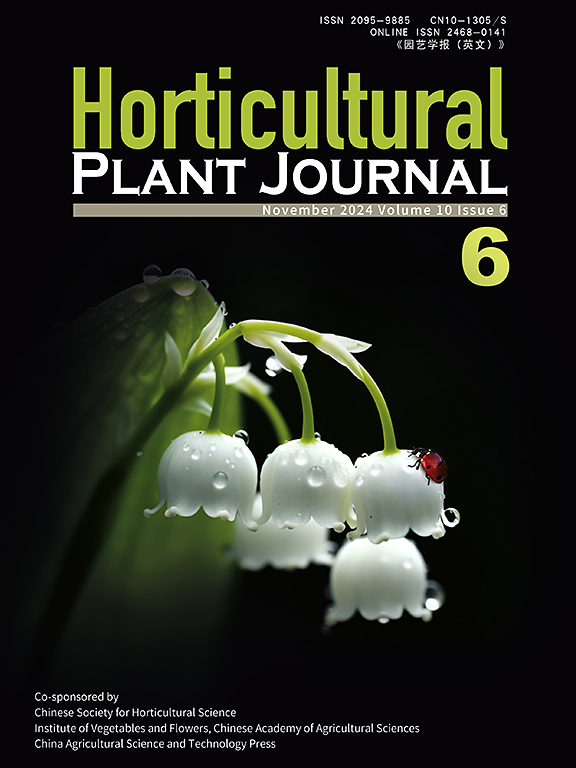海棠G蛋白偶联受体MdGPCR的盐胁迫响应途径及调控机制
IF 6.2
1区 农林科学
Q1 HORTICULTURE
引用次数: 0
摘要
中国的苹果面积和产量约占世界的一半,是促进农民收入增长和乡村振兴的支柱产业。近年来,随着全球气候的急剧变化,中国大部分苹果产区都遭受了盐害。环渤海华北平原苹果产区土壤盐渍化,尤其是次生盐渍化较为普遍。这些现象说明苹果产业防治和抵抗土壤盐碱化的能力还有待提高。本文在苹果中鉴定了一个新的盐敏感基因MdGPCR。利用MdGPCR技术对苹果愈伤组织和叶片进行了盐胁迫试验。结果表明,盐胁迫后转基因苹果MdGPCR的过表达会积累大量活性氧,导致其体内氧化还原水平失衡。同时,MdGPCR与MdSOS3相互作用,促进其降解,进一步降低其耐盐性。本文章由计算机程序翻译,如有差异,请以英文原文为准。
Salt stress response pathway and regulatory mechanism of the Malus domestica G protein-coupled receptor MdGPCR
China accounts for about half of the world's apple area and production, and is a pillar industry that promotes farmers' income growth and rural revitalization. In recent years, with the dramatic change of the global climate, most apple (Malus domestica ) producing areas in China have suffered salt damage. Soil salinization, especially secondary salinization, is common in apple producing areas in the North China Plain around the Bohai Sea. These phenomena indicate that the ability of apple industry to prevent and resist soil salinization still needs to be improved. In this article, we identified a novel salt sensitive gene MdGPCR in apple. We conducted salt stress experiments on apple callus and leaves using MdGPCR . The results showed that after salt stress, overexpression of MdGPCR in transgenic apple would accumulate a large amount of reactive oxygen species, leading to an imbalance of redox levels in their bodies. At the same time, MdGPCR interacts with MdSOS3 and promotes its degradation, further reducing its salt stress resistance.
求助全文
通过发布文献求助,成功后即可免费获取论文全文。
去求助
来源期刊

Horticultural Plant Journal
Environmental Science-Ecology
CiteScore
9.60
自引率
14.00%
发文量
293
审稿时长
33 weeks
期刊介绍:
Horticultural Plant Journal (HPJ) is an OPEN ACCESS international journal. HPJ publishes research related to all horticultural plants, including fruits, vegetables, ornamental plants, tea plants, and medicinal plants, etc. The journal covers all aspects of horticultural crop sciences, including germplasm resources, genetics and breeding, tillage and cultivation, physiology and biochemistry, ecology, genomics, biotechnology, plant protection, postharvest processing, etc. Article types include Original research papers, Reviews, and Short communications.
 求助内容:
求助内容: 应助结果提醒方式:
应助结果提醒方式:


